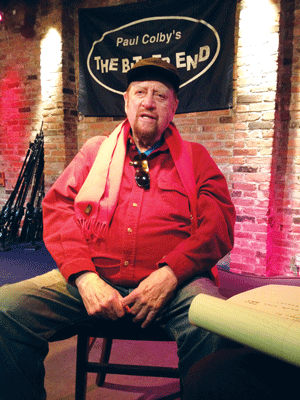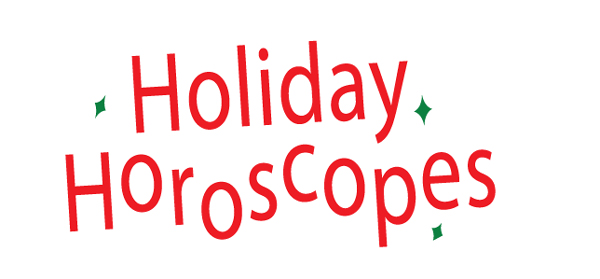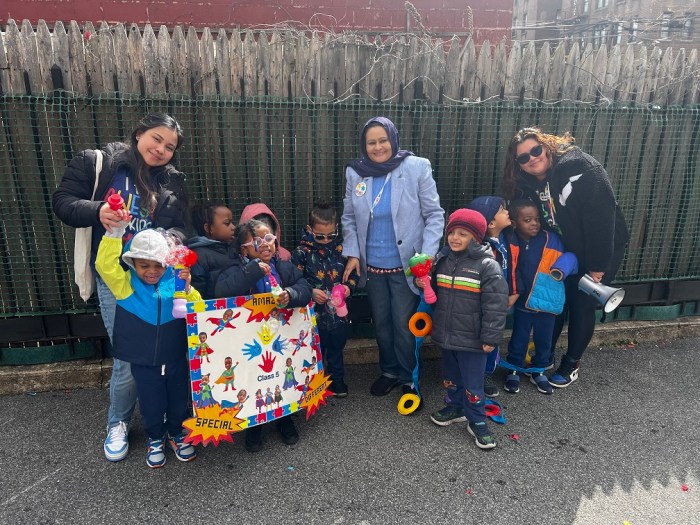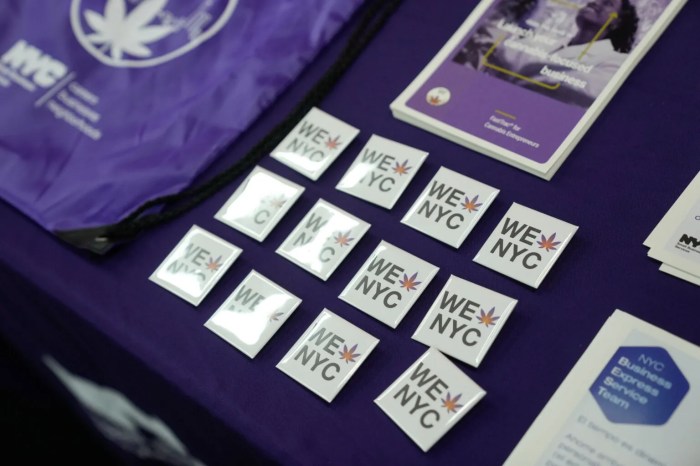
BY JERRY TALLMER | Fred Weintraub, all 6-foot-2 and 215 pounds of him, was coming back in high enthusiasm, on a brief visit from Los Angeles, to cast an eye on The Bitter End, the dynamic Bleecker Street culture cradle he had founded and run from1961 until Warner Bros. snatched him up in 1969.
Also to, well, plug a book — his book, “Bruce Lee, Woodstock and Me” (Brooktree Canyon Press), written with David Fields but altogether in the voice of am amused and amusing mensch, i.e. Fred Weintraub.
Closing in on what, as of April 27, will be his 84th birthday, Bronx-born Weintraub was, in a van carrying him and his knockout wife, Jackie, down to Bleecker Street, still as excited as a kid. Or as Picasso in search of his Rose Period.
“Look, there’s MacDougal Street!” he exclaimed at a traffic light, but it wasn’t quite, “Look, there’s Sheridan Square!” — but once again he had jumped the gun. Then the light went green, the van crossed Sixth Avenue, and sure enough a few blocks later the young man who was driving pulled up in front of an orange exterior and spanking blue awning that, at 147 Bleecker Street, proclaimed that you were at The Bitter End.
Weintraub had never seen the liquor bar that has replaced the ice cream and coffee bar of his teetotal regime.
“That was over there,” said Paul Rizzo, one of the three current owners, “and the bleachers” — the ancient pews rescued from junking at St. Mark’s Church in the Bowery — “were over here.”
Weintraub was showing Jackie and the press — this press — the exact spot where, on a bitter cold January morning in 1961, his buddy and mentor Tom Murray had picked a little patch of mouldering plaster off a wall, revealing something red beneath. Murray and Weintraub picked some more, the two of them, and what emerged was a 150-year-old redbrick wall that became the keystone, so to speak, of the whole Bitter End phenomenon itself.
Only now, today, Fred wasn’t sure where that exact spot had been. He hid his face in his hands, trying to envision it.
“I think it was here,” he finally said, indicating a 5-foot space between two brick columns — the columns that had bracketed the tiny semi-circular stage on which, and from which, the careers of Neil Diamond, Billy Crystal, Linda Ronstadt, Odetta, Judy Collins, Dustin Hoffman, Jane Fonda, Bill Cosby, Richie Havens, Harry Chapin, Theodore Bickel, Joan Rivers, Pete Seeger, Jerry Stiller, Anne Meara, George Carlin, Peter, Paul and Mary, and dozens, scores, hundreds of others had rocketed off toward fame and fortune.
And Cassius Clay speaking his own poetry.
And Woody Allen, who was booked for a month but was going nowhere fast the first two weeks — “Couldn’t get across to the audience at all” — and came almost in tears to ask Fred: “What went wrong?”
“I told him you’ve got to be a standup comic first, and it’s better to be hated by the audience than merely liked.” Today, half a century later, Weintraub — whose motion-picture producing career from “Woodstock” to martial-artsman Bruce Lee and beyond is also in this book — considers Woody Allen and Clint Eastwood to be the two most fecund Hollywood moviemakers of our lifetimes.
What about that very name, The Bitter End? Where did that come from?
“Tom Murray came up with it,” Weintraub recalled. “It means the last little section of rope that winds around a bollard on a boat. Don’t ask me what a bollard is. I just liked the sound.”
Before Woody Allen, before Peter, Paul and Mary, before the whole parade of performers at The Bitter End in the Fred Weintraub 1960s, there was a personality who called himself Wavy Gravy, real name Hugh Romney, taking to that miniature stage.
Like this here Romney of today?
“Yes!” said Weintraub, stroking his mini-beard, “but a real nice guy. He was the emcee at Woodstock… .”
“Not the emcee,” said Mrs. Weintraub from across the room. “He was in charge of security at Woodstock.”
One can see why “Bruce Lee, Woodstock and Me” is so feelingly dedicated to “Jackie: Inspiration, intelligence and love. Who could ask for anything more.”
Born in Virginia, raised in Los Angeles, Jackie Dubey Weintraub is, she says, Fred’s “fourth and longest wife” — 25 years now. From his previous marriages Fred Weintraub has two sons, two daughters and four grandchildren.
Back to business. Lenny Bruce, the most daring pioneer of them all, never played The Bitter End, but he was a friend of Weintraub’s, as was Howard Solomon, the owner of Café Au Go Go, the basement nightspot across the street at 172 Bleecker, a couple of blocks to the west.
“I actually had a piece of the Go Go,” said Weintraub, who once, at the Theatre de Lys on Christopher Street — “going from failure to failure” — had produced a musical called “Gogo Loves You,” by Anita Loos, “that opened and closed in one night.”
Now, in April 1964, with Lenny Bruce about to open at Howard Solomon’s Au Go Go, Weintraub — who by then had had much experience dealing with the N.Y.P.D. and such insanities of censorship as “There shall be no more than three stringed instruments on stage unless you serve liquor” — urged Lenny to clean up his act just for the occasion.
Of course Lenny did not. And of course Lenny got busted. Looking straight into the eyes of two cops taking notes, he pushed the dirty words as far as they could go.
In due course, Fred Weintraub got involved in the obscenity trial of Lenny Bruce. And one day — he reprises this in the book — one of his secretaries, Bea Marks, “a sweet spunky Catholic girl from St. Bernard’s Parish in Brooklyn,” looked up from her typewriter “and said: ‘Fred, do you think “cocksucker” should be hyphenated?’ ”
It was that kind of era.
“Such a memorable period,” said Fred, pushing back his Los Angeles blue baseball cap. “The energy. The excitement. Nobody talked about money. Everybody helped everybody else.”
Fred, from his “office” — the fenders of parked cars outside his joint — would book entertainers, order supplies (ice cream, coffee, soft drinks), and compose ads that read: “Tourists! Please don’t come to The Bitter End this weekend. We’ll be busy with Peter, Paul and Mary.”
“It was the bra-less time, remember?” he recalled. “Women were more aggressive, Kennedy was going into the White House…and it all culminated at Woodstock” in 1969.
Which Weintraub was not at. He was 3,000 miles away at Warner Bros., trying to make sense out of the footage from 15 camerapersons at Woodstock.
“I was the worst executive Warner Bros. ever had. Started at the top and worked my way down. In a studio you have to say ‘No’ a lot — like a virgin. But Warner Bros. liked me so much, I stayed seven years. And now the older people are saying: ‘I gotta buy this book for my son, my grandson.’ ”
He had started putting down notes toward a book many years ago.
“Started with my childhood in the Bronx, where my father ran a toys and baby carriages business, and I was bar mitzvah’d by Richard Tucker and was thrown out of high school. But then I decided I hate those books that start with childhood.”
A couple of years ago, Weintraub’s agent put Fred together with writer David Fields, from which pairing this book has now emerged. The second of two book signings in New York City is today, Thursday, April 5, at 6 p.m., at Barnes & Noble, 97 Warren Street in Tribeca.
Fred Weintraub likes to cite a precept of Winston Churchill’s: “Success is the ability to go from failure to failure without losing enthusiasm.”
“I think it was right here,” he said, patting — with enthusiasm — one anonymous brick in The Bitter End’s history-rich redbrick wall.


















